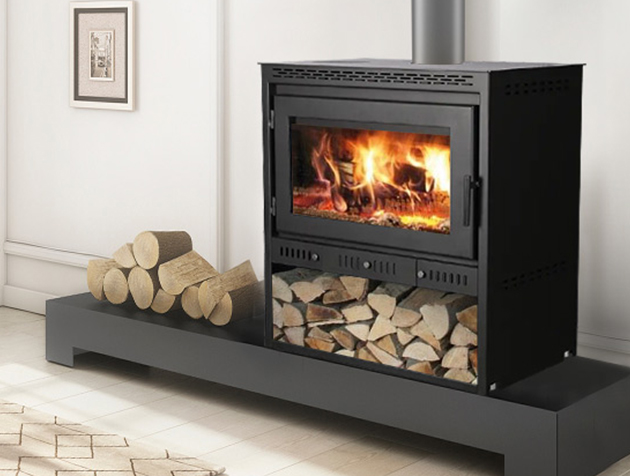Freestanding wood burning fireplaces have been a beloved feature in homes for centuries, providing warmth, ambiance, and a traditional aesthetic appeal. Over time, these fireplaces have evolved significantly in design, materials, safety features, and efficiency to meet modern needs and regulations.

Historically, freestanding wood burning fireplaces were simple cast iron or steel stoves, designed primarily for heating. They featured basic forms, often box-shaped or cylindrical, with a fire chamber, a door, and a chimney outlet. Early models were valued for their durability and ability to radiate heat efficiently into a room.
At that time, little attention was given to emissions, fuel efficiency, or aesthetics beyond functional requirements. Installation was straightforward, with the unit placed on a non-combustible surface and connected to a chimney or flue.
One of the key changes in freestanding wood burning fireplaces is the advancement in construction materials.
Cast Iron to Steel: While cast iron remains popular for its heat retention, modern designs increasingly use steel. Steel allows for thinner walls, reducing weight and enabling sleeker shapes without compromising strength.
Ceramic and Firebrick Linings: Fire chambers are now often lined with ceramic or firebrick materials. These protect the stove's body, improve heat retention, and contribute to more complete combustion.
Glass Doors: The introduction of heat-resistant glass doors has transformed the visual experience. Clear, durable glass allows for viewing the flames while maintaining safety and controlling airflow.
These materials have improved durability, heat output, and user enjoyment.
Modern freestanding wood burning fireplaces incorporate technology to burn wood more efficiently and reduce emissions.
Secondary Combustion Systems: Many fireplaces now include air injection ports or secondary combustion chambers. These help burn off gases and particles that would otherwise escape as smoke, resulting in cleaner combustion and higher heat output.
Catalytic Combustors: Some advanced models use catalytic converters to further reduce smoke and increase efficiency. Although more complex, these systems are effective in meeting stricter emission standards.
Airflow Controls: Adjustable vents and dampers enable better control of air supply, optimizing combustion and fuel use.
Such innovations address environmental concerns and improve the user's experience by reducing smoke and ash.
Freestanding wood burning fireplaces have transitioned from purely functional devices to important design elements in homes.
Variety of Styles: Contemporary fireplaces come in various styles, including traditional, rustic, modern minimalist, and industrial. This allows homeowners to match the fireplace with interior décor.
Compact and Space-Saving: New designs focus on heat output while footprint, suitable for smaller living spaces or open-plan areas.
Customization Options: Finishes in different colors, textures, and materials (such as enamel coatings, brass accents, or stone bases) provide personalized touches.
These changes reflect a growing demand for fireplaces that combine function and form.
Safety has become a major focus in the development of freestanding wood burning fireplaces.
Heat Shields and Insulated Components: These protect nearby walls and floors from heat damage.
Improved Door Seals: Tight seals on doors prevent sparks and embers from escaping.
Compliance with Regulations: Modern fireplaces meet building codes and safety standards, including requirements for clearance and venting.
Manufacturers also provide clear installation guidelines and encourage regular maintenance to prevent hazards.
With increasing awareness of environmental impact, regulations have influenced the development of wood burning fireplaces.
Emission Standards: Many countries enforce limits on particulate emissions and efficiency ratings. This drives innovation in combustion technology and design.
Encouragement of Sustainable Fuel Use: Modern fireplaces are designed to optimize burning of seasoned hardwoods, which produce less smoke and more heat.








